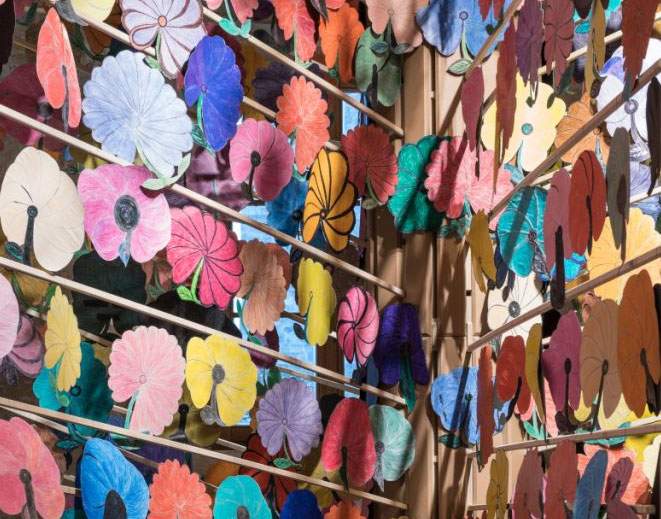An all-female exhibition featuring eight women artists: it's the engaging The Material Life in Reggio Emilia, Palazzo da Mosto
From November 17, 2018 to March 3, 2019, Palazzo da Mosto in Reggio Emilia is hosting the exhibition La Vita Materiale. Eight rooms, eight stories, a project by Marina Dacci whose design lever is the desire to enhance a female artistic practice that skillfully connects the artistic path to personal experience and the art/life link in all its complexity and fertility.
Eight women artists are taking part in the review: they are Chiara Camoni, Alice Cattaneo, Elena El Asmar, Serena Fineschi, Ludovica Gioscia, Loredana Longo, Claudia Losi, and Sabrina Mezzaqui, all Italian artists who, although with very different formal experimentation, are united by the use of materials that are often humble and traditionally associated with craft, with craftsmanship that find a generous space in their artistic work. In a relationship made of estrangements and approaches, of contact and detachment, of manipulations between physicality and mnestic rarefaction, their research is a “focusing” of the self in the world; it narrates the apperception and re-generation of objects and materials and gives substance to visions and stories, capable of fable about our everyday life and of ferrying us into other dimensions.
Underlying stories, provocations, interrogations, staging of processes in their making in all their fragility and energy, through works in which the finite and the non-finite mingle and in which their works give rise to sensitive formal narratives. The viewer is invited to discover eight habitats, eight environments to which each artist has given a title: rooms like cocoons, in which each of them has proposed her own world, her work in the studio, and in which it appears clearly how matter, in its processes of transformation, is something “organic” and vital. They are presented in a confident way that does not alienate and intimidate the visitor, but encourages his or her possibility of venturing into the game of discovery.
The exhibition involves and interrogates the senses: sight and touch in particular, because our experience passes through the body, which creates synaesthesia with its surroundings. It is a body-world; for this reason, in the opening of the exhibition, “the tree of the body” perceived and narrated by Claudia Losi and the veil on a “landscape-body,” staged by Elena El Asmar, become happy prologue to the eight rooms. The exhibition is proposed as a playful, intriguing, questioning journey that captures the viewer like a spider-weaving, emotional and mental: the goal is that at the end of the journey new windows will open on the way we perceive and read our common “material life.”
The project is accompanied by a volume (the last collective work in the exhibition) published by Gli Ori, which contains work diaries, notes and drawings that shed light on the creative journeys of the invited artists, as well as presenting the works exhibited at Palazzo da Mosto in the site-specific installation.
This project offers connections with the anthological exhibition dedicated to Jean Dubuffet, presented simultaneously at Palazzo Magnani: the lightness, the playfulness of the installation, the appreciation of the process and the unfinished that goes hand in hand with a profound reflection on what defines art and us in relation to it; the generative capacity to pollute, to hybridize, to break boundaries between high and low culture by decontextualizing, employing and renewing the life of objects and materials connected to our everyday lives.
The event is part of the cultural actions that the Palazzo Magnani Foundation has structured with its Scientific Committee as part of the wide-ranging and organic project to systematize, together with the Municipality of Reggio Emilia and Fondazione Manodori, the city’s various exhibition venues, from Palazzo Magnani to Palazzo da Mosto to the Cloisters of San Pietro.
Opening hours: Fridays, Saturdays and Sundays from 10 a.m. to 7 p.m. For all info you can visit the Palazzo Magnani Foundation website.
Pictured: Sabrina Mezzaqui, Making Flowers, detail
 |
| An all-female exhibition featuring eight women artists: it's the engaging The Material Life in Reggio Emilia, Palazzo da Mosto |
Warning: the translation into English of the original Italian article was created using automatic tools. We undertake to review all articles, but we do not guarantee the total absence of inaccuracies in the translation due to the program. You can find the original by clicking on the ITA button. If you find any mistake,please contact us.




























